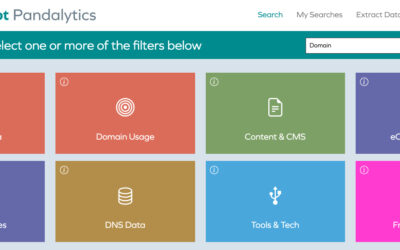Knowing how to protect your and clients’ brands online can feel overwhelming. In this post, we outline initial considerations and planning you should do in making sure your brand is protected.
A trademark and a domain name are two essential tools that play a crucial role for a brand to establish a strong online presence.
The purpose of a trademark registration is to offer legal protection for your brand by providing exclusive rights to use a specific name, logo, or slogan associated with your business. It prevents others from using similar marks that may confuse consumers or dilute the distinctiveness of your brand – this is the core principle of trademark protection. By securing a trademark, you can take legal action against infringers, protect your business reputation, and avoid potential lawsuits or disputes.
When customers see your trademark, they associate it with your products or services, which fosters brand recognition and loyalty. It is also where brand equity is built over time. Brand consistency is key to brand recognition, which also results in the loyalty aspect, when consumers know that the brand relates to an expected quality. A registered trademark becomes an asset that can increase the value of your small business.
It is important to note that as much as trademarks and domain names are connected and represent a brand’s IP assets, there is a key difference between them:
You can have similar trademarks co-exist in different trademark classes but there should be only one key domain name to represent the brand online. This is the importance of registering and monitoring domain names, to protect your online identity, to prevent misuse, confusion, or brand disparagement. It has become increasingly important for small businesses to be aware of the number of copy-cats on the prowl. Brands must take the necessary steps to protect their brand both on and offline.
As your business grows and expands over time, the brand built will become increasingly recognized by consumers globally. You will want to mirror your brand’s trademark portfolio in your domain name portfolio, in the form of registering domain names to reflect your brand’s global online presence. This is imperative to build brand awareness in geographies where you have your trademark protection in place and, more importantly, to avoid confusion amongst your consumers in that region. Customers now expect a brand to have its online presence with localized content that resonates with the local audience. With that in mind, a brand should consider taking small steps to monitor online activity that could potentially be infringing on your brand. The best way to begin, what may seem like an overwhelming initiative, is to begin with an online audit.
The importance of an online Audit
An online audit is an important step to continuously ensure that the intellectual property assets of a company are aligned with its internal business and policy objectives. The insights gained from the audit can be leveraged by different teams within the organization, including marketing, product, corporate strategy, IT, and legal.
One aspect of the audit is to verify if the domain names registered are aligned with the company’s trademark portfolio and if the corresponding trademarks are protected globally. This provides a quick insight that may present gaps in where registration and protection need to be strengthened.
Another important consideration is to have a strategy in place for the deletion and registration of domain names within the portfolio. The ratio of ccTLDs (country code top-level domains), gTLDs (generic top-level domains), and nTLDs (new top-level domains) will provide an idea of how well aligned, or not, the defensive strategy is applied globally – as well as the renewal efforts involved, especially with ccTLDs, where it gets more complex, with local restrictions in place.
If a Uniform Domain-Name Dispute-Resolution Policy (UDRP) case is won or if a Registrant responds favorably to a cease-and-desist letter, a risk-free process should be in place to ensure the transfer of the domain name from the losing registrar is successfully transferred to the brand’s registrar of choice. Many times, updates to protect the recovered infringing domain name are overlooked and this could lead to loss of the domain name again. This would happen if the administrative email address for the domain name was not updated to reflect the brand’s standard email address or DNS settings have not been updated and the infringing domain name is still reflecting older content, which can be detrimental to the brand’s image. A good practice would include steps taken to update all relevant fields to reflect the respective corporate domain name strategy.
Regular private crawls of the entire domain name portfolio may be necessary to monitor ongoing activity to ensure overall online brand policy compliance. This includes monitoring changes in DNS fields and Whois data retrieved from the Registrar directly.
It is also essential to ensure that a brand which has a distribution channel, is authorized to resell through an IP license agreement, and are duly displaying corporate IP assets in compliance with the company’s corporate and policy standards. These authorized resellers are empowered to sell the brand’s products because they have remained compliant with the “look and feel” of the brand’s IP.
An audit can also help identify changes in traffic patterns to identify potential redundancies in keeping certain domain names as IP assets. It may be necessary to replace underperforming domain names with those that can generate more traffic and potentially attract new businesses.
During mergers and acquisitions activities, gaining insight into the unique properties within each domain name can help recover additional web properties that a business may be unaware of. This serves as another form of an IP audit.
Staying on top of the web activity as it relates to your brand’s digital presence, is crucial. This can help guide budget and cost planning for the years ahead.
IP Law firms, domain name registrars, web hosting providers are also best positioned to consider offering these value-added services, if your business is growing quickly. By considering these use cases, small businesses can effectively protect their brands and intellectual property assets in a rapidly evolving digital landscape.
Not sure where to start? We get it. Reach out and let’s talk. From one-time audits, to ongoing monitoring solutions, or pointing you in the right direction for the support you need, we can help.
Learn more about our Brand Monitoring services.



